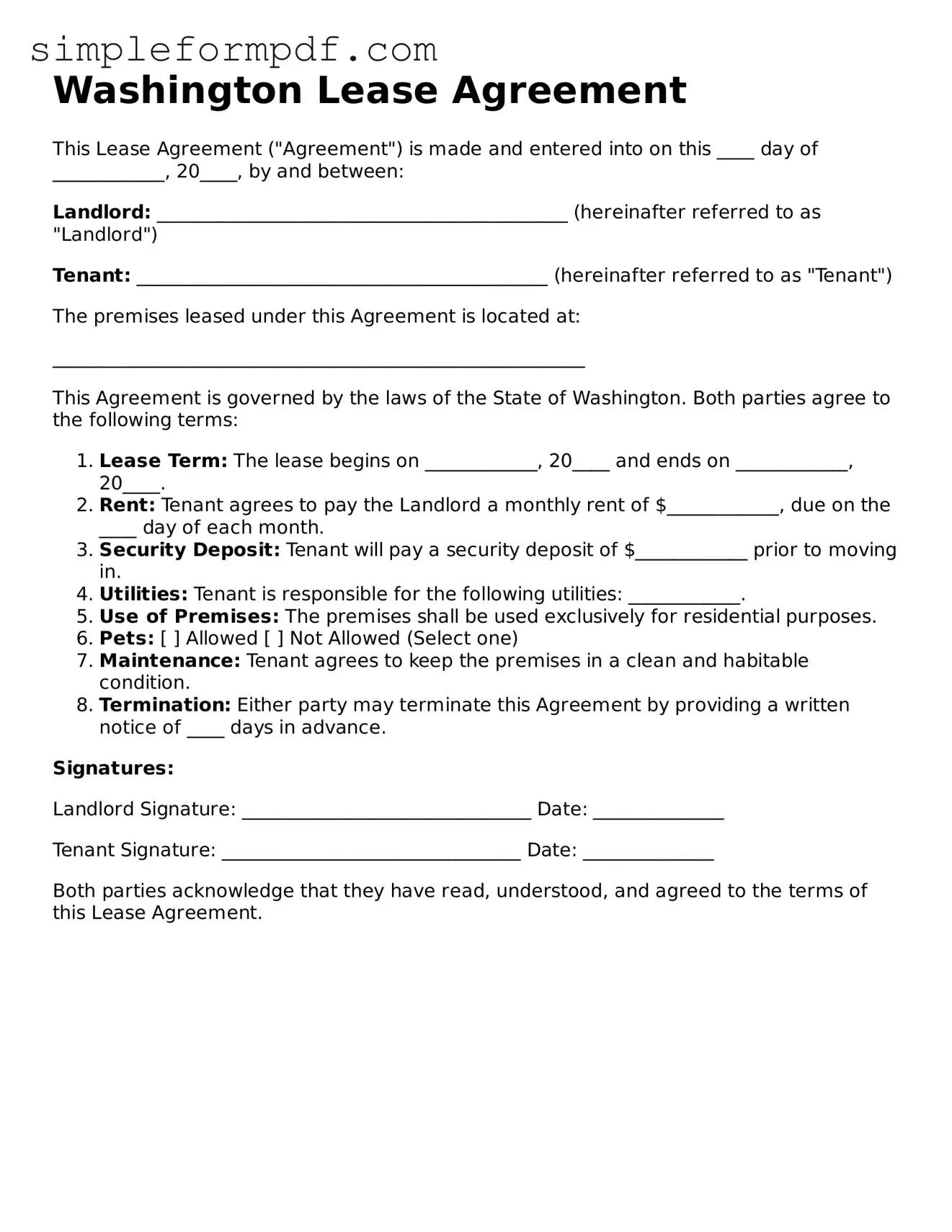Washington Lease Agreement
This Lease Agreement ("Agreement") is made and entered into on this ____ day of ____________, 20____, by and between:
Landlord: ____________________________________________ (hereinafter referred to as "Landlord")
Tenant: ____________________________________________ (hereinafter referred to as "Tenant")
The premises leased under this Agreement is located at:
_________________________________________________________
This Agreement is governed by the laws of the State of Washington. Both parties agree to the following terms:
- Lease Term: The lease begins on ____________, 20____ and ends on ____________, 20____.
- Rent: Tenant agrees to pay the Landlord a monthly rent of $____________, due on the ____ day of each month.
- Security Deposit: Tenant will pay a security deposit of $____________ prior to moving in.
- Utilities: Tenant is responsible for the following utilities: ____________.
- Use of Premises: The premises shall be used exclusively for residential purposes.
- Pets: [ ] Allowed [ ] Not Allowed (Select one)
- Maintenance: Tenant agrees to keep the premises in a clean and habitable condition.
- Termination: Either party may terminate this Agreement by providing a written notice of ____ days in advance.
Signatures:
Landlord Signature: _______________________________ Date: ______________
Tenant Signature: ________________________________ Date: ______________
Both parties acknowledge that they have read, understood, and agreed to the terms of this Lease Agreement.
